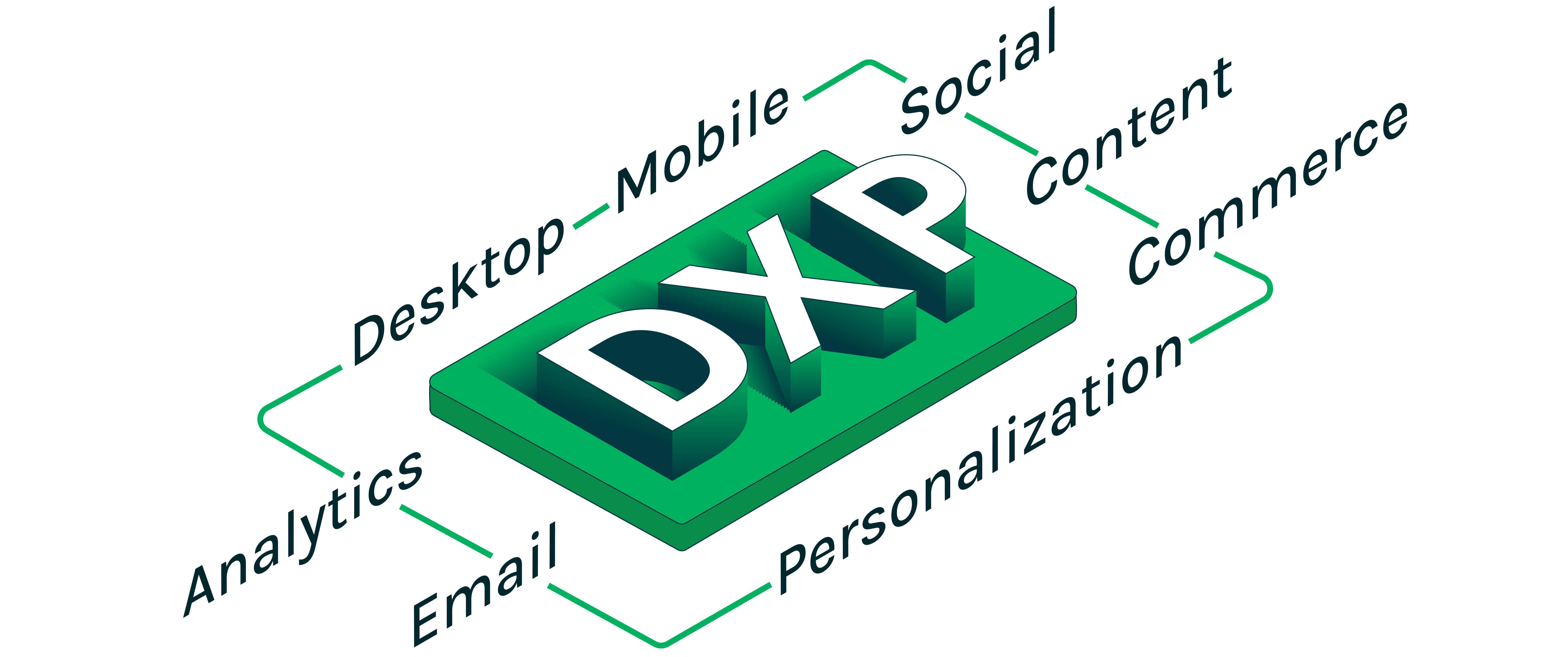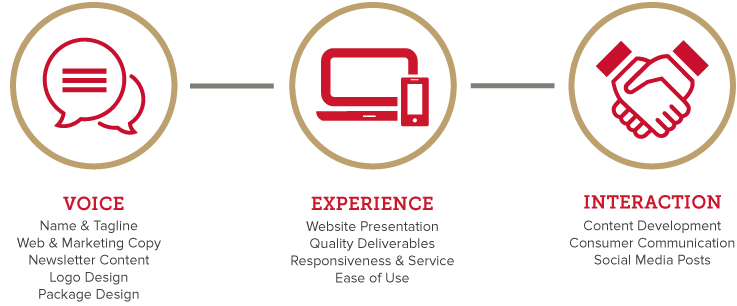Consumers today are spoiled for choice when it comes to mobile and web applications to help them get what they need.
A satisfying digital experience throughout the customer journey will lead to better customer engagement - and ultimately what every business wants with every interaction - a repeat customer.

Digital Experience Management (DEM) is an approach to enhancing user experiences across a variety of digital platforms. But with an ever increasing array of digital touchpoints, managing the user experience requires actionable insights into customer journeys and user behavior.
In this blog, we'll explain what digital experience management is, how to harness the power of technology for better customer experiences, and how a well instigated customer relationship management plan will enhance business outcomes for any organization.
For more insights, read our comprehensive report The Future of Contact Centers & How to Develop a Winning CX
What is the digital experience?
Almost every interaction we have in our daily lives involves digital experiences.
Mobile applications, eCommerce websites, social media apps, and smart devices, are all providing a digital experience to consumers or employees.
With so many digital devices and platforms available, it's now possible for every customer looking for goods or services to closely interact with a business digitally through mobile technology.
In stores, payments are predominantly made digitally. But even if there is no physical person-to-person contact during an online or omnichannel experience no matter what device or location, users expect their customer journey to be seamless. Communication breakdowns, payment failures, network interruptions all create digital experiences that could potentially lose customers.
Employees in a hybrid or remote working situation rely on their devices and networks to function flawlessly to get their work done. A sub-par digital experience, including device malfunction, network problems hindering productivity, inability to access communication platforms are all examples of a bad digital experience.

Image source: Magnolia
Read our informative blog Delivering Omnichannel Experience in a Multichannel World
Digital Customer Experience & Customer Experience: What's the difference?
While the two terms are similar, they have different definitions which are important when it comes to digital experience management.
They can basically be summed up as a customer's experience with digital communication channels vs. what a customer derives from a brand as a whole.
Digital Customer Experience - DCX
Interactions between a user and organization through digital channels, and the impression they walk away with after using those channels, is referred to as Digital Customer Experience.
This connection is of huge importance, because it represents the lengths a company has gone to, to make information, products or services available to a customer, as well as the avenues through which they can communicate. This could include websites, mobile apps, wearables, mobile apps, IoT devices, chatbots etc.
The moving parts of those channels, such as navigation, clarity of images and text, ease of use, sound etc. all play to a customer's emotional reaction to value, comfort and enjoyment of their digital experience. With DCX, customer satisfaction is driven by a well thought-out, easily executed digital experience.
Customer Experience - CX
A customer's overall impression of, and reaction to a brand's products and services, and their product quality on the other hand, is referred to as customer experience.
From seeing an advertisement online or on TV, to submitting a request by phone or email, a customer's experience is about the level of engagement and the emotional response to a relationship with an organization - whether those experiences are face-to-face or digitally.
A business can live or die by the sum total of every engagement, and the impact it has on the customer.
Interactions that could affect CX might include communicating with both chatbots and live agents; placing an order for a product over the phone; searching or navigating a website to find something specific; booking an Uber, or simply having an experience like a return or exchange with a purchased product.

Image source: Optimizely
What is digital experience management (DEM)?
A customer’s journey often begins and ends digitally, so great service involves creating a contingent, connected digital customer experience that addresses all of the customer's needs, encompassing DCX and CX.
Digital experience management (DEM, or alternatively DXM) is the process of tracking and monitoring every point of contact a user has with a company’s digital channels including website, social platforms, mobile applications, intranets, email and more.
Digital experience monitoring is specifically designed to resolve problems, improve end user experience through a better understanding of what’s working, to pinpoint issues, and make improvements as required. The only way to achieve this is by monitoring and analyzing customer data.
By revealing how end users feel about the experiences a business delivers, the more power they have to optimize and improve them.
Digital experience management requires end to end visibility into every digital channel, the collection of real time data, and the ability to see the performance of every channel in real time.
Why are digital experience management solutions important?
A digital experience management solution is essential for every business who wants to drive growth.
Customer retention is a vital component of business growth, so digital experience management tools help keep customers returning because you're creating a more personalized, more consistent and responsive interactional experience.
A digital experience management platform enables companies to manage the DX at every user touchpoint, from sales and marketing, to accounting and contact center support.
DXM helps customers see you, your brand and your products in the best possible light, no matter how or where they interact with you.

Image source: Srijan
For more information on customer retention, read our comprehensive article What Is Involuntary Churn & How You Can Prevent It
Here are some of the ways in which digital experience monitoring can benefit businesses and customers.
Enhancing the customer journey through all touchpoints
Digital experience monitoring can reveal deep insights as to what touchpoints could be improved during a customer's journey or where and when customers are experiencing pain points throughout their journey.

Image source: Freshworks
Brand consistency
Brand consistency equals brand success. Focusing on digital experience monitoring allows businesses to present a consistent brand image and message across all digital channels. This enables true omnichannel marketing, ensuring that every all customers experience your brand exactly the same way, no matter what digital channel they access.

Image source: G2
Personalization
An important benefit of a digital experience management platform is that it allows businesses to personalize the digital experience for their customers. By collecting and analyzing customer data, you can create specific personalized products, offers, messages and formats.
Integrations with multiple tools
Instead of analyzing each single platform, a digital experience management solution integrates a variety of tools and services into a clearly visible window through which to view your DX needs. From content and asset management to CRM, reporting and analysis to APIs and automation. This improves efficiency, and enables you to view the entire digital experience in a holistic way.
Improved customer insights
Using reporting and analysis tools, digital experience monitoring generates volumes of data about your customers, allowing you to convert this data into usable, valuable insights into their wants and needs, and what then expect from your brand.
Increases sales and ROI
Ultimately, digital experience management helps business growth and profitability. By having the means to personalize your digital customer experience, you can potentially increase sales from each customer.
What is synthetic transaction monitoring?
Synthetic transaction monitoring is a type of performance monitoring valuable to a digital experience platform by simulating online user behavior. This can help to establish baselines and measure performance under controlled conditions, allowing you to resolve real problems more efficiently.
For example, a page that is slow to load could lead to a lost sale or customer. Synthetic monitoring actively tests an application and can measure load and response time, uptime, and performance of critical pages during business transactions. Even minor technical issues can hurt brand reputation and profit.
How IR's digital solutions can help
Customer experience is the lifeblood of your business, then a great customer experience must be at the heart. To ensure excellent customer experience, and to drive business growth, it’s essential that your payments systems, unified communications and contact center technology are working well – all the time.
With IR's suite of performance management solutions, you'll get the real-time insights you need to deliver a level of service that exceeds customer expectations.
Hundreds of the world's largest organizations rely on IR’s experience management solutions to optimize their business-critical systems.
We provide insights, monitoring and support to keep payment hubs, unified communications ecosystems and contact centers running as they should.




